Why visit the Alhambra in Granada? If “Because it’s spectacular!” is not motivating enough, here are five other reasons why you should.
The Alhambra is one of the world’s most spectacular and evocative places. It is said that the Sultan who founded it, Muhammad ibn Naṣr of the Nasrid dynasty, named it “al-Ḥamrā” (“the Red”), after the color of his beard. In the era of its utmost splendor, the Alhambra was a true and fortified city that was perfectly functional and self-sufficient in respect to Granada, the enchanting Andalusian city that stands at its feet. Art, beauty and culture are found in among every part of the palace: Gardens, mosques, Arab baths and the Sultan’s harem.
Are you a lover of ancient art, and love to explore legendary places? Do you love to be immersed in nature, smell the perfume of flowers and take photos? If the answer to these questions is yes, you should pack your bags and go to Granada for a visit to the Alhambra. If “simply because it’s wonderful” isn’t reason enough for you to visit, here are five more reasons why you should visit the Alhambra.
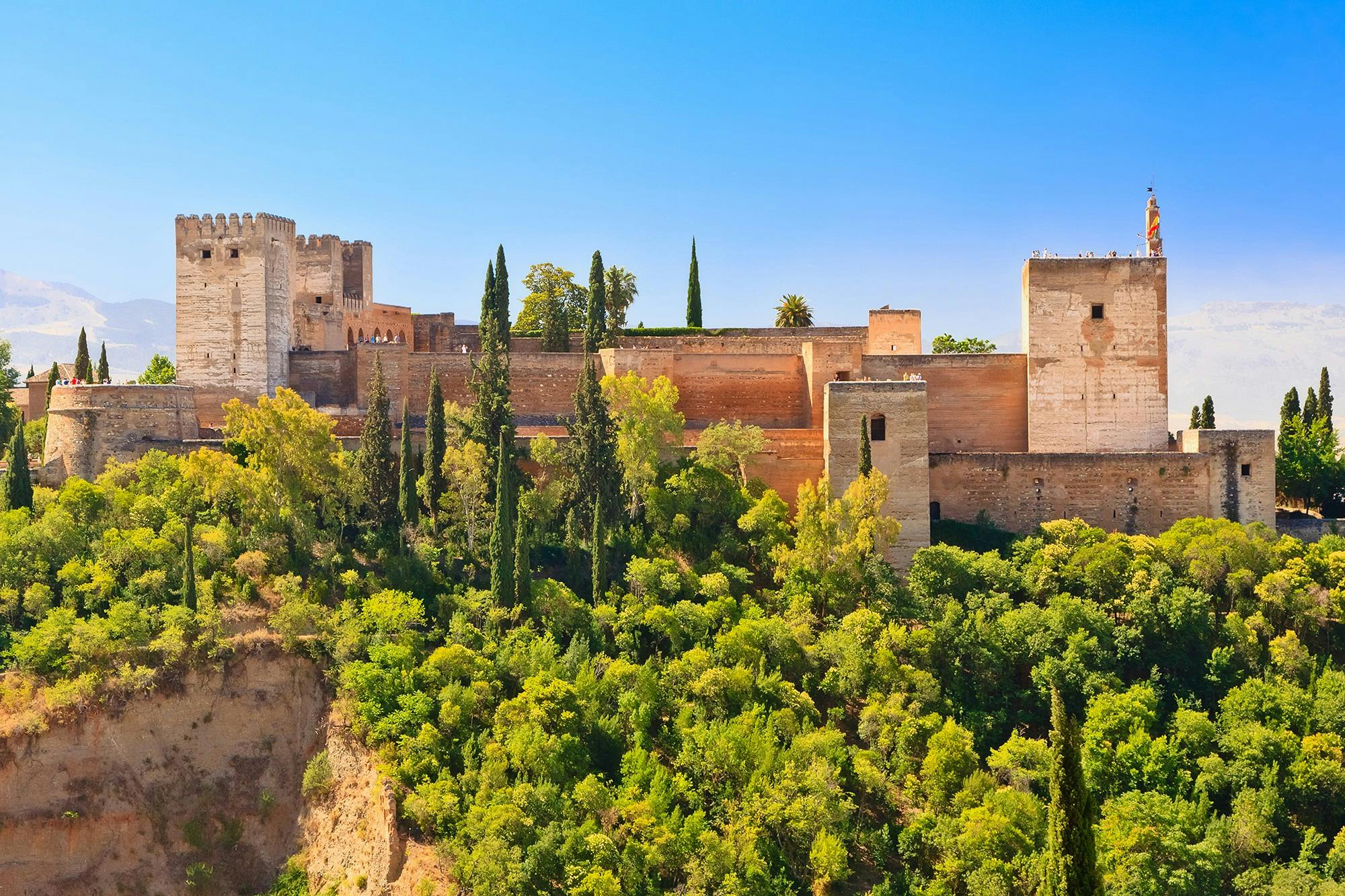
The Alhambra
1. The Alhambra has many stories to tell
Know who said, “You cry like a woman for what you haven’t been able to defend as a man”? No, not one of the characters in a George R. R. Martin saga, but the mother of Sultan Boabdil, Granada’s last sultan. It is said that in 1492, when the army of Catholic rulers Isabella and Ferdinand invaded Granada, the Sultan escaped from the Alhambra, abandoning the city at the mercy of enemies. During the escape, he turned around and was moved to tears by the admiration he felt looking at his splendid city for the last time. His mother, irritated by the surrender and his behavior, spoke those sweet words of consolation. Not only will the Sultan Boadil be remembered as the one who put an end to the Nasrid dynasty, but he was also very unlucky in love. It is said that his wife, Queen Morayma betrayed him with a knight of the Abencerrajes tribe. When Boadil discovered the clandestine relationship, he didn’t take the news very well. At all. Under the pretense of a feast, he invited the knight and 36 of fellow knights to the palace and had them beheaded as soon as they crossed the threshold. He repudiated the queen and had her locked up in isolation within the Alhambra. Today, the cypress tree trunk that the two lovers hid behind remains. It’s also said that iron oxide stains at the bottom of the fountain and in the canal of the Sala degli Abencerrajes are the bloodstains of the slaughtered knights.
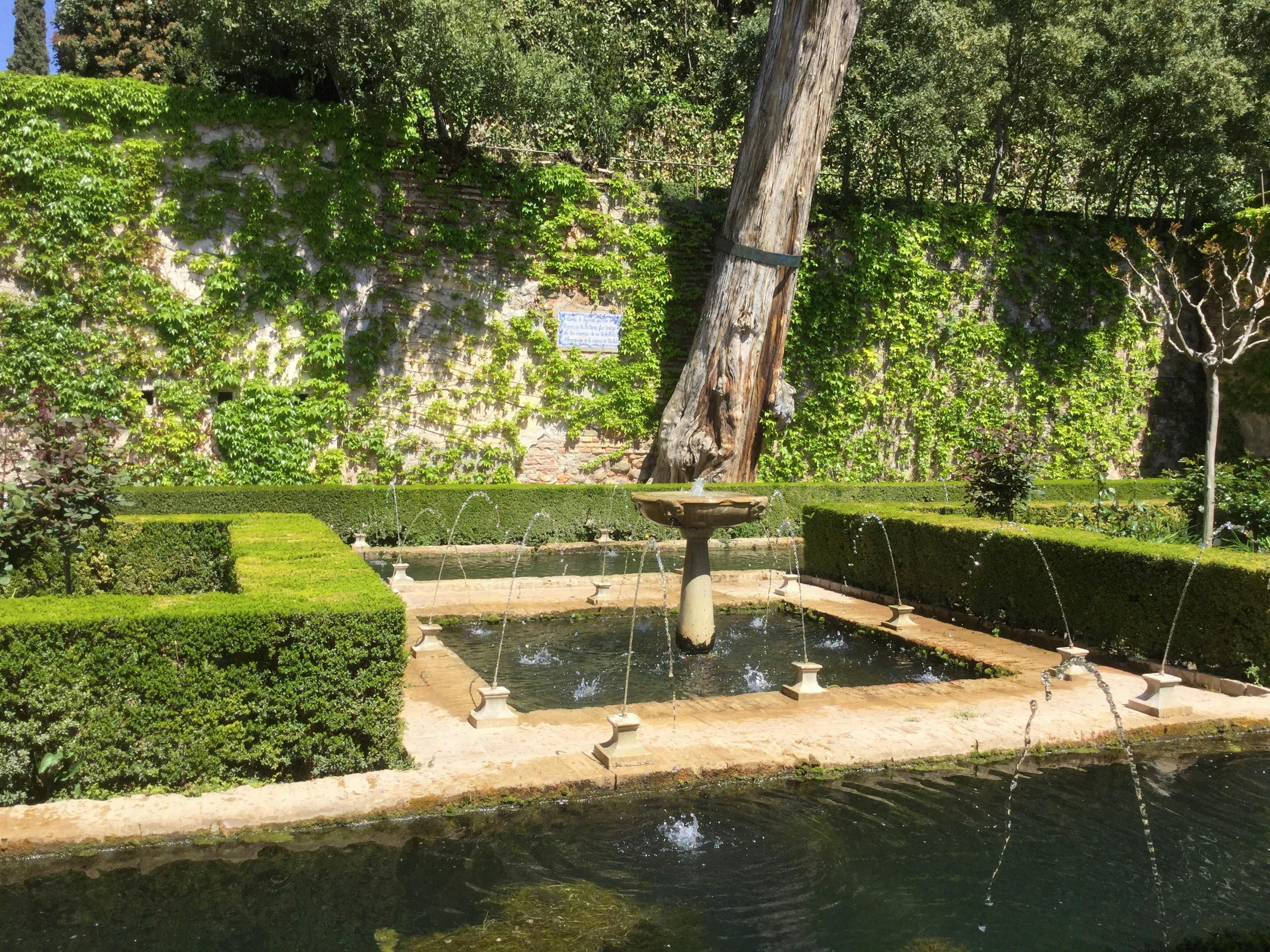
The cypress tree trunk, a silent witness to Queen Morayma’s illicit love affair.
2. Spectacular Andalusian art
You won’t find paintings and pictures on display inside the Alhambra. Rather, the Alhambra itself is a masterpiece of inlays and colours that cover every centimetre of the building’s walls, forming a thick weave of arabesques that were created piece-by-piece with small moulds. These ornamental motifs have a very precise meaning: They are in fact made according to the visual principles of repetition and symmetry of individual self-replicating units that represent the oneness of God and his omnipresence.
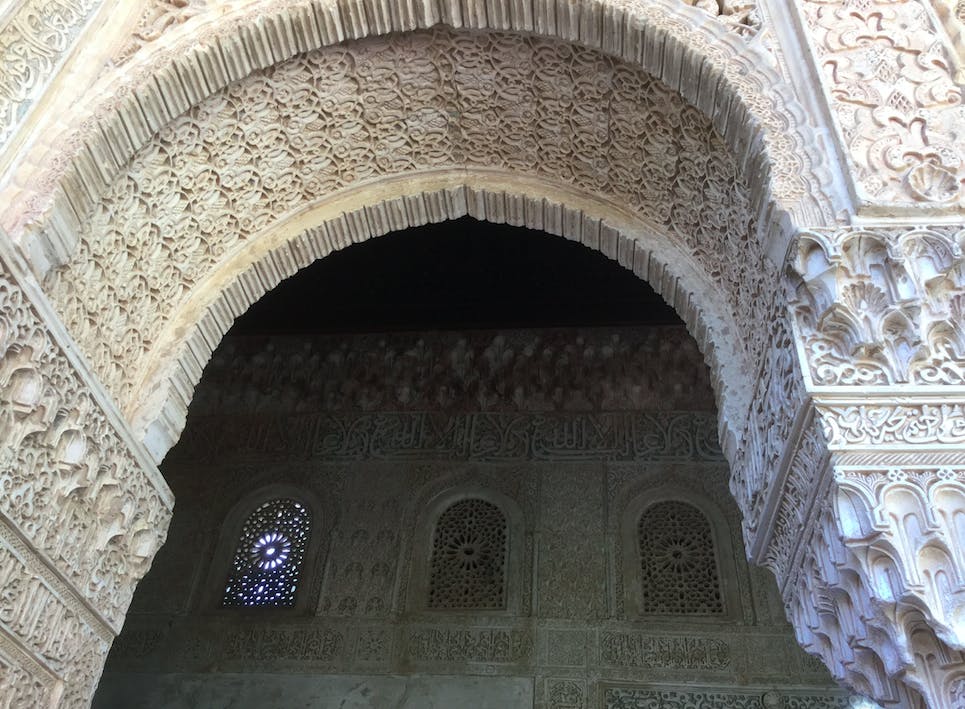
Some of the arabesques that adorn the buildings that comprise the Alhambra.
3. A literary fascination that crosses languages and centuries
Not only are the rooms of the Alhambra pervaded by the literary fascination of the stories of the One Thousand and One Nights, which in 1829 inspired writer Washington Irving to pen the Tales of the Alhambra. The palace’s walls are engraved with verses from poems that exalt the grandeur of God and the beauty of Granada, all written in an ancient language that only a few people in the world can decipher. In all respects, the Alhambra was a self-sufficient organism and for this reason, its inhabitants spoke and wrote in a language that coupled some Arabic elements with those of ancient Andalusian. The poetry engraved along the inner perimeter of the magnificent Sala de Las Hermanas, translated into Spanish, reads as follows: “Obra sublime, la luck quiere/ que ado momento sobrepase. / ¡Cuanto recreo aquí para los ojos! “
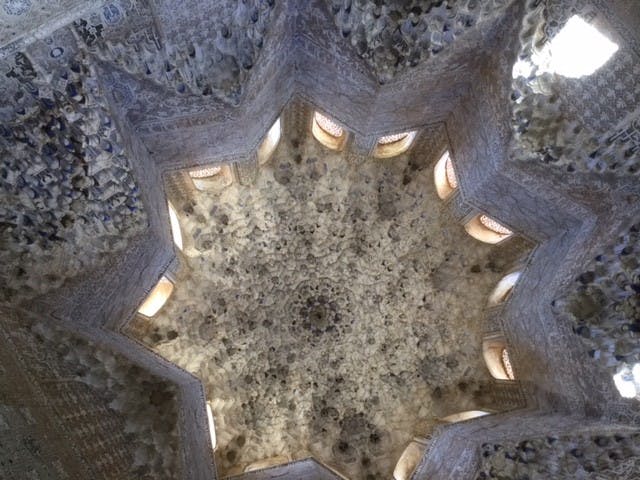
A detail of the cupola in the Sala de Las Hermanas
4. The nature of Generalife Gardens
Not only home to art, literature and legends, but also extraordinary nature. The Alhambra stands on a hill surrounded by dense forest, and the Generalife gardens are a triumph of flowers, plants and perfumes. Part of the gardens are original, characterized by orchards and orange groves that had a functional purpose during the reign of the Sultans. The former provided fruit and vegetables to the citadel’s inhabitants while the latter served as insect repellent in addition to producing oranges. Another typical element of the Moorish garden are the rectangular mirrors of still water, which differ from the sparkling fountains found in the recently restored part of the garden. The lush gardens of the Generalife are the antechamber of paradise as described in the Koran, with rose and myrtle bushes, climbing plants and beautiful wisteria.
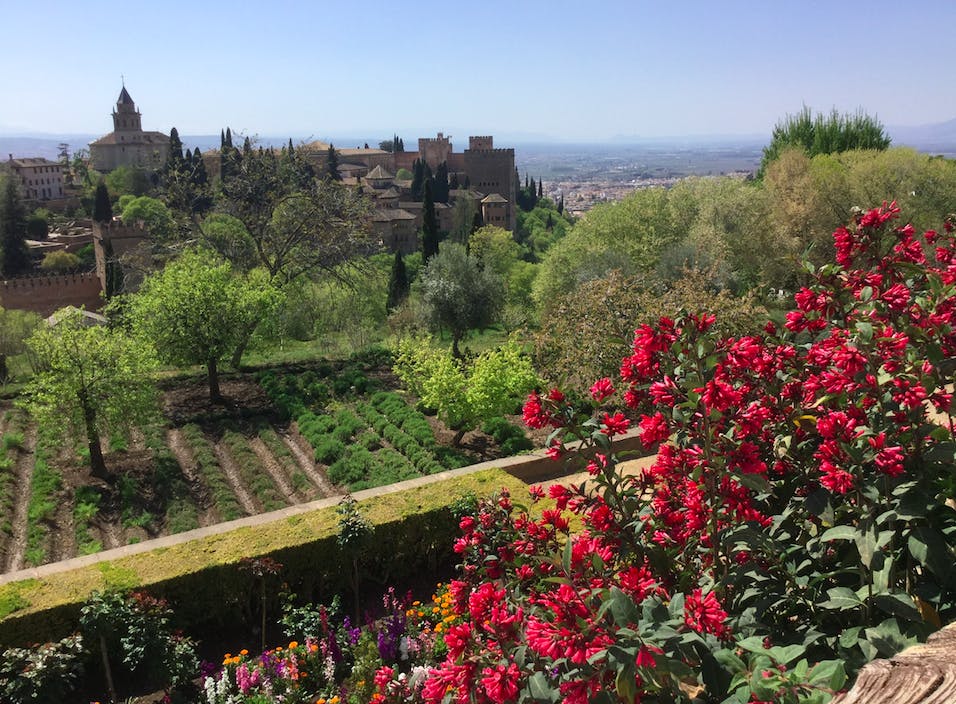
The lush gardens of Generalife
5. Breathtaking views of Granada in all its splendour
The Alhambra was a fortress, and for this reason it stood in a privileged position at the top of the city. Alcazaba, the military citadel, was its highest point. From the Alhambra, you can admire Granada from above, the Arab quarter of Albaizin, the inhabited caves of Sacromonte, and the snowy peaks of Sierra Nevada, where every year the Ski and Snowboard World Championships take place. A breathtaking, Instagram-esque spectacle.
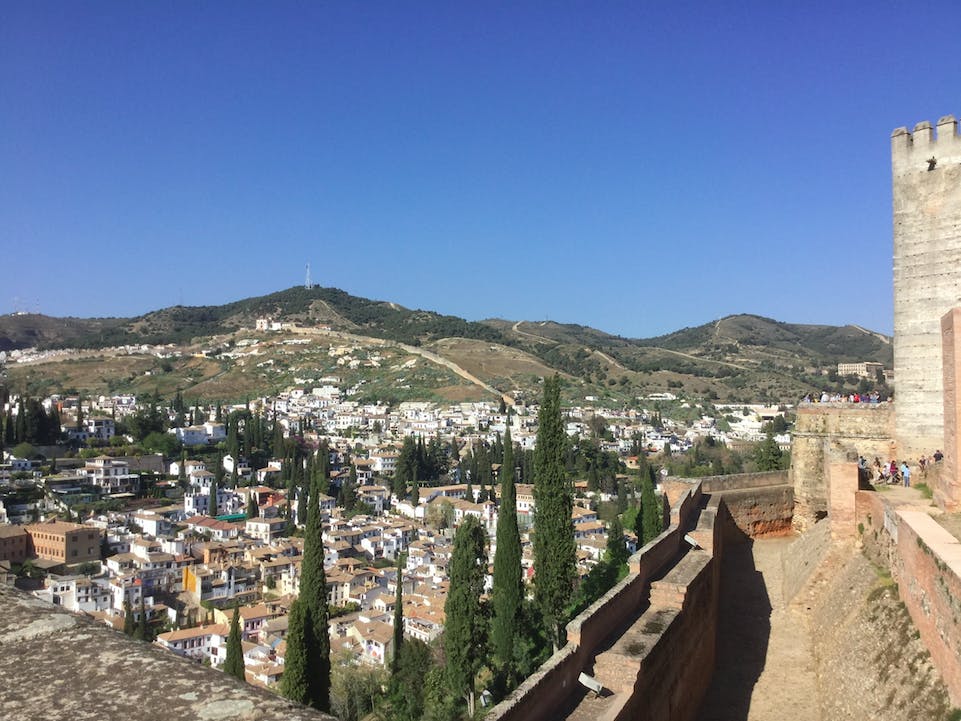
View of the caves of Sacromonte from the Alcazaba
